How To Teach Your Baby Sign Language
Just because your little one can’t talk yet, doesn’t mean you can’t communicate with them! Here’s how I taught my baby sign language.
Baby sign language has been awesome for us. It’s been a great way to communicate with our daughter Sage even though she can’t talk yet – although she’s MASTERING the word ‘no’! Having signals we can use to ‘speak’ to her without words has been super helpful because it saves having to guess what she wants. It reduces frustration for both of us, and it was surprisingly easy to teach her. One of the top questions I get asked over on my Instagram is how I taught Sage sign language, so here we go!
What is baby sign language?
Baby sign language is a set of simple hand gestures (AKA signs) that mean common words such as ‘more’, ‘all done’ and ‘milk’. You can use them with your baby to ask questions (for example, “Would you like more?”) and your baby can use them to answer you. It’s basically a way to communicate with your baby before they learn how to speak.
What are the benefits of baby sign language?
There are so many benefits to teaching your baby sign language. It builds confidence, it encourages their drive to learn and it reduces frustration when it comes to communication. On top of all that, signing with your baby means you’ll naturally be talking to them way more than you might otherwise, which will only help to teach them to speak in the long run.
Is baby sign language the same as ASL?
Not necessarily. ASL, or American Sign Language, is a complete language. There’s complex rules to do with grammar and word order, whereas baby sign language is very basic. After all, if you’re teaching it to a baby, it’s got to be simple enough for them to learn!
What age should you start doing baby sign language?
I didn’t do a whole lot of research before I started teaching Sage, but I did start young. She was about six months old – right around the time we started feeding her solids. This age worked really well because a lot of the signs correspond to food. I wouldn’t worry if your little one is older than 6 months though. They can pick it up at any time!
How to teach a baby sign language
Repetition is key. Any time I’m trying to teach Sage a new sign, I just repeat it again and again. So, for example, when I wanted to teach her the sign for ‘milk’, I’d do the sign while saying the word, and then I’d give her milk. When I wanted to teach her ‘more’, I’d ask her “Do you want more?” while doing the sign, and then I’d give her more.
Once I’d done it myself a few times, I started taking her hands and showing her how to do the signs. She might try to do it with my hands at first, or to do it on me. Just have fun with it and they’ll pick it up eventually. We’re working on a few new signs right now like ‘please’ and ‘water’, and I’ve recently picked up this book which I’m excited to try.
The other thing I’d suggest is not being too strict about the actual signs. The sign for ‘all done’ is kind of tricky for young babies to do in my opinion, so just waving both hands worked way better for us. As long as you understand it and your baby understands it, that’s all that matters. They can perfect it as they get older.
My top tips would be…
- Reward or show a positive response when your baby uses sign language
- Have the whole family use it with baby
- Use it throughout everyday life, not just with food. “More” can also mean “keep playing”
- Sign in front of a mirror so baby can see what they are doing
- Start early
- Be consistent and repeat, repeat, repeat!
Common baby signs we taught Sage
There are a ton of baby signs out there, but here are the ones we taught Sage to begin with…
Milk
Milk was a really good one to start with, because she seems to catch on easiest when it’s something she really loves. Once she had milk down, she understood the idea of signing and so the others were easier to pick up. If you’re consistent with it, you’ll see one day they just ‘get it’. To sign ‘milk’, make two fists with thumbs pointing up, then stretch out your fingers and bring them back into fists.
More
I often only give Sage half of her meal to begin with, and keep the rest separate. Then, once she’s finished what’s on her plate, she can ask for more. To sign ‘more’, pinch your thumbs and fingers together on both hands, then tap your fingertips together a few times.
All done
As I said, we don’t strictly do this one correctly. To sign ‘all done’, you’re meant to start with your palms facing towards you and turn them until your palms face outwards. This was a bit tricky for Sage, so we just wave our hands in the air to signal all done.
Have you ever tried baby sign language? Let me know your favourite signs in the comments below!
If you’re preparing to start your baby on solid foods, you may also want to check out my Baby Food Resources I’ve Been Loving post and my 6-8 Month Meal Plan.
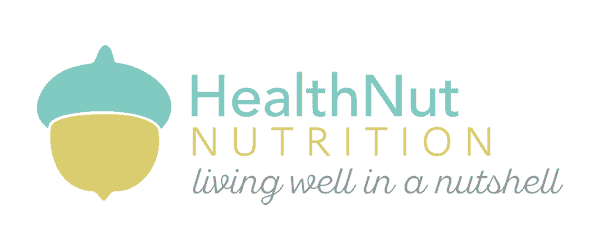
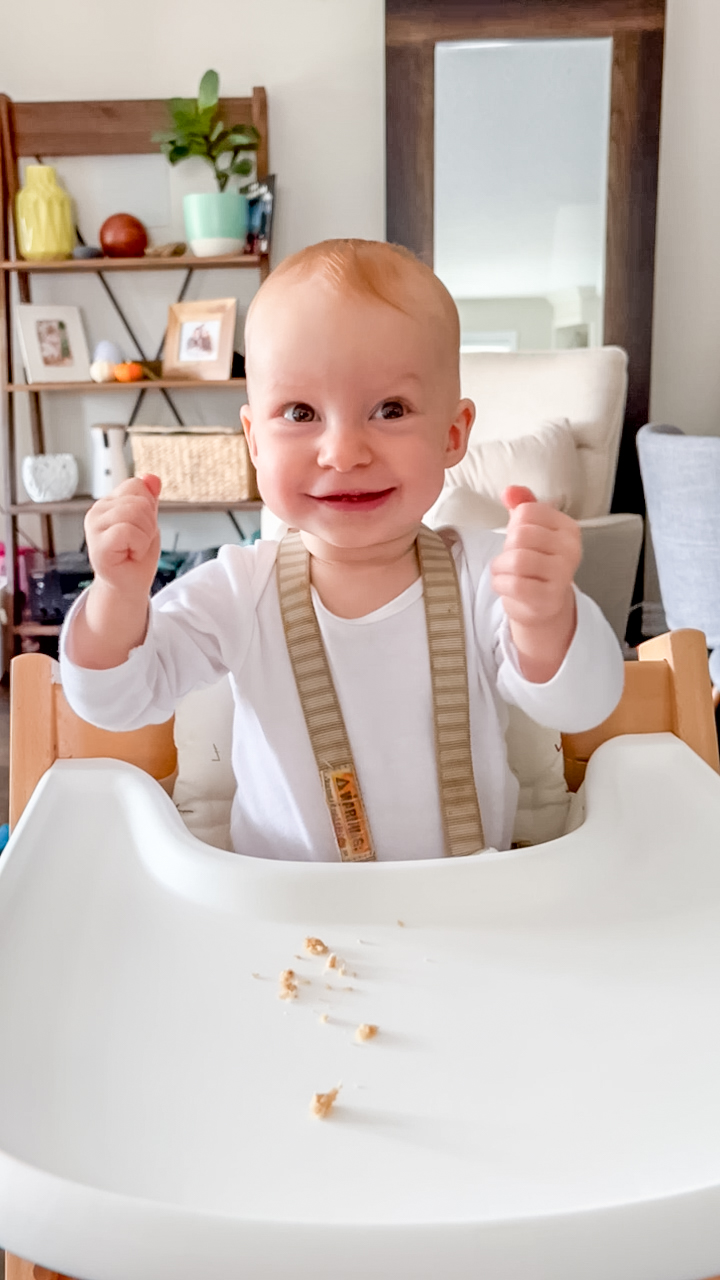
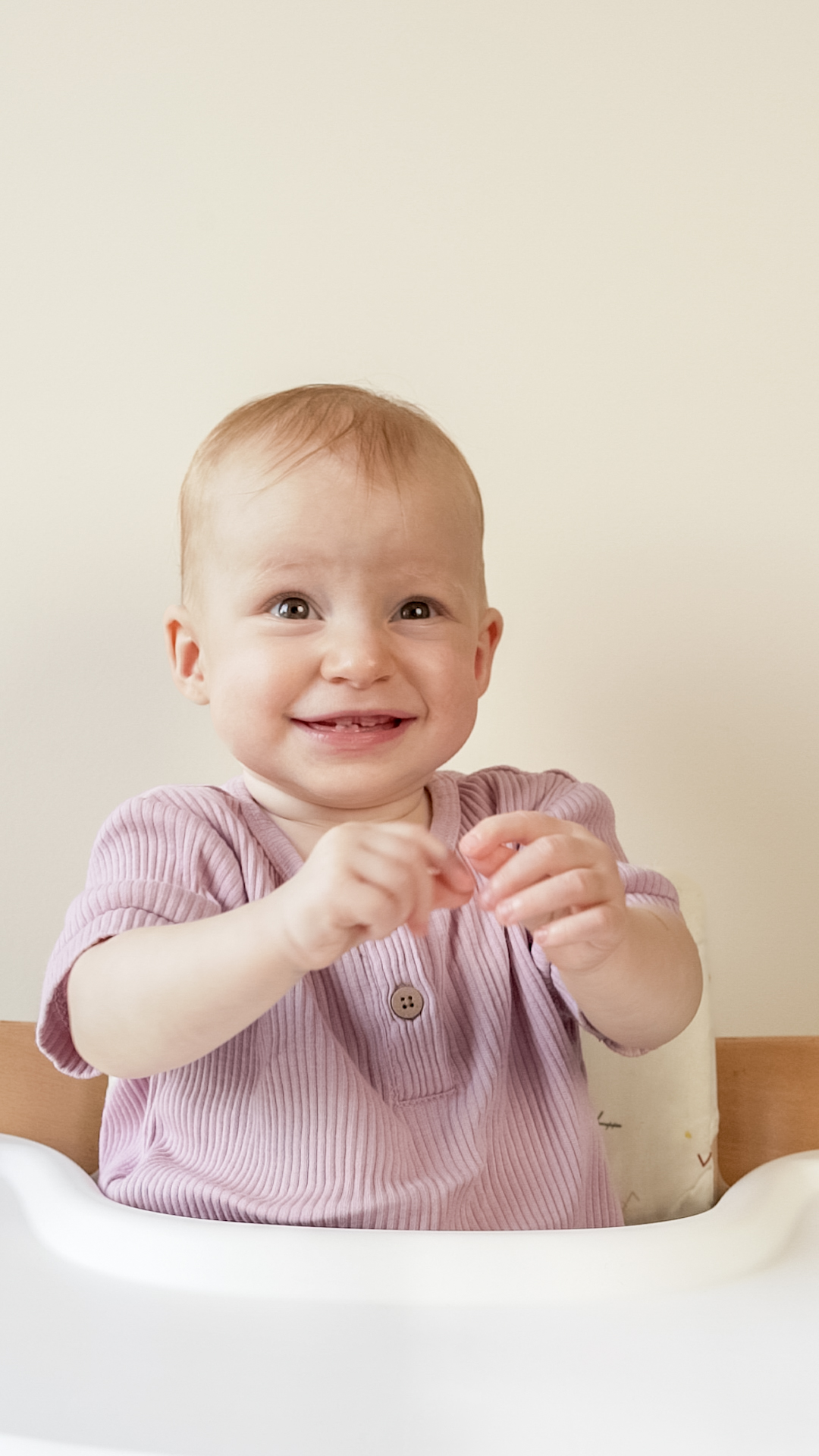
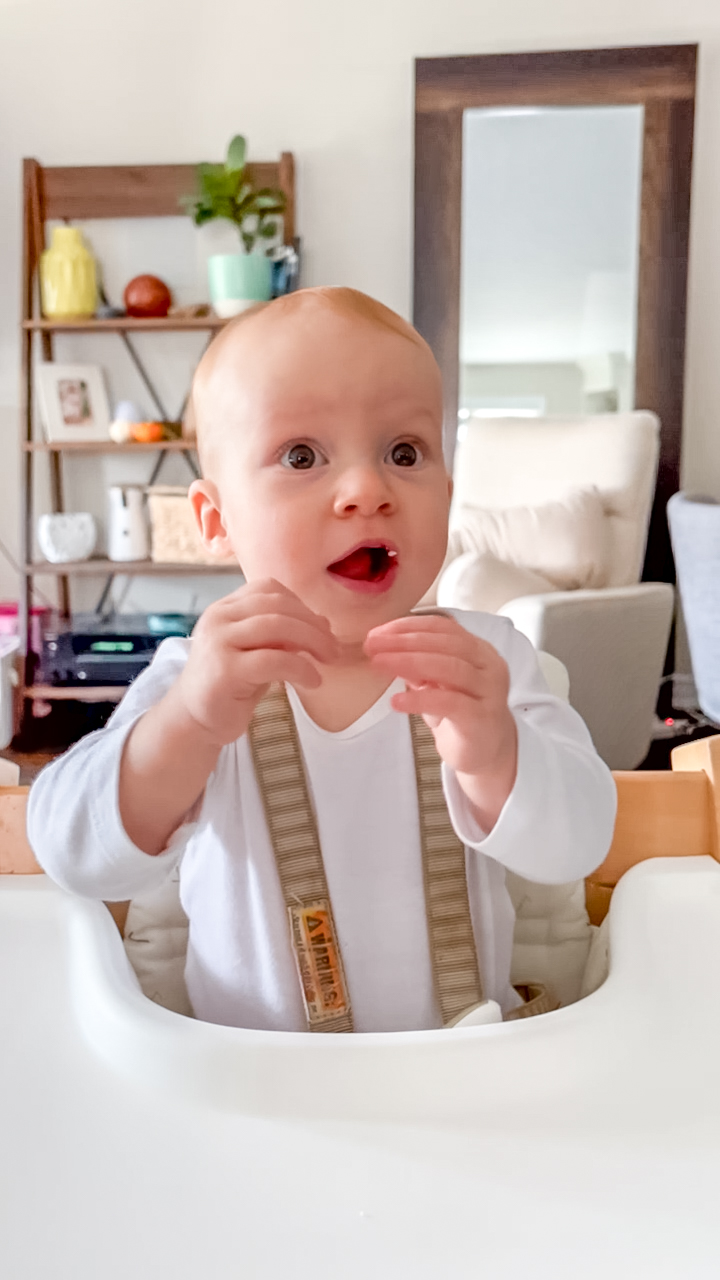
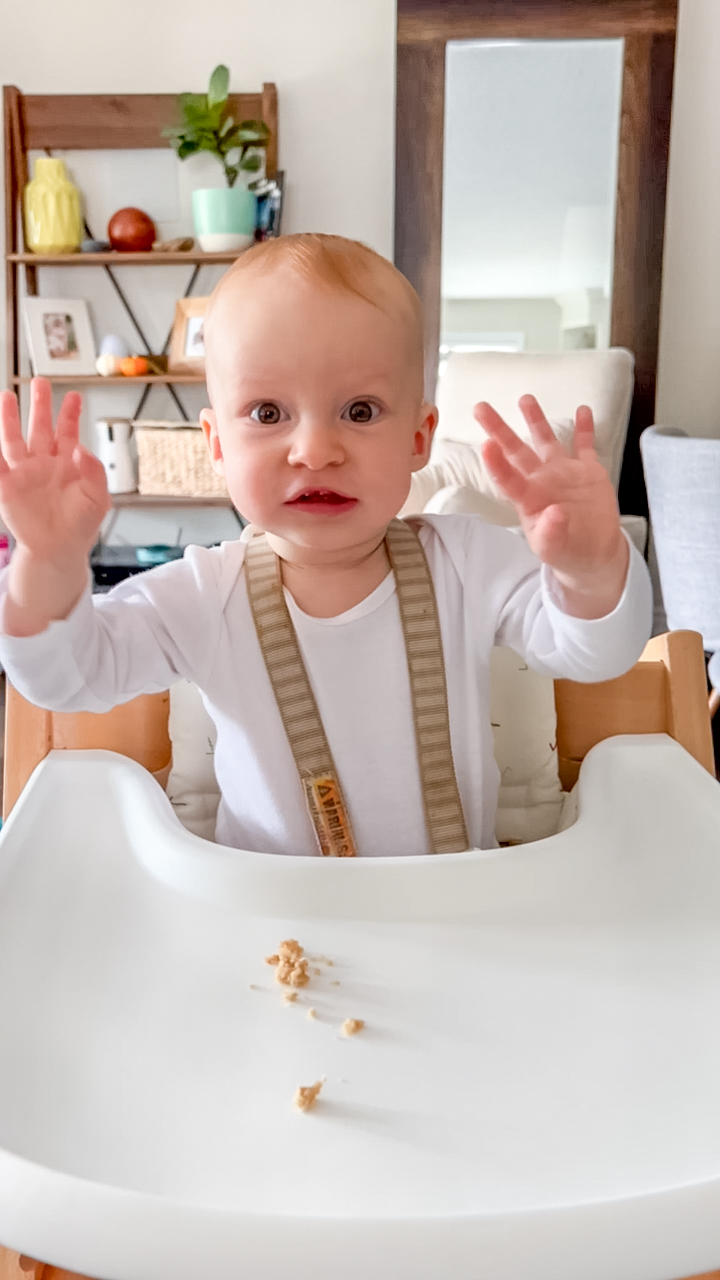
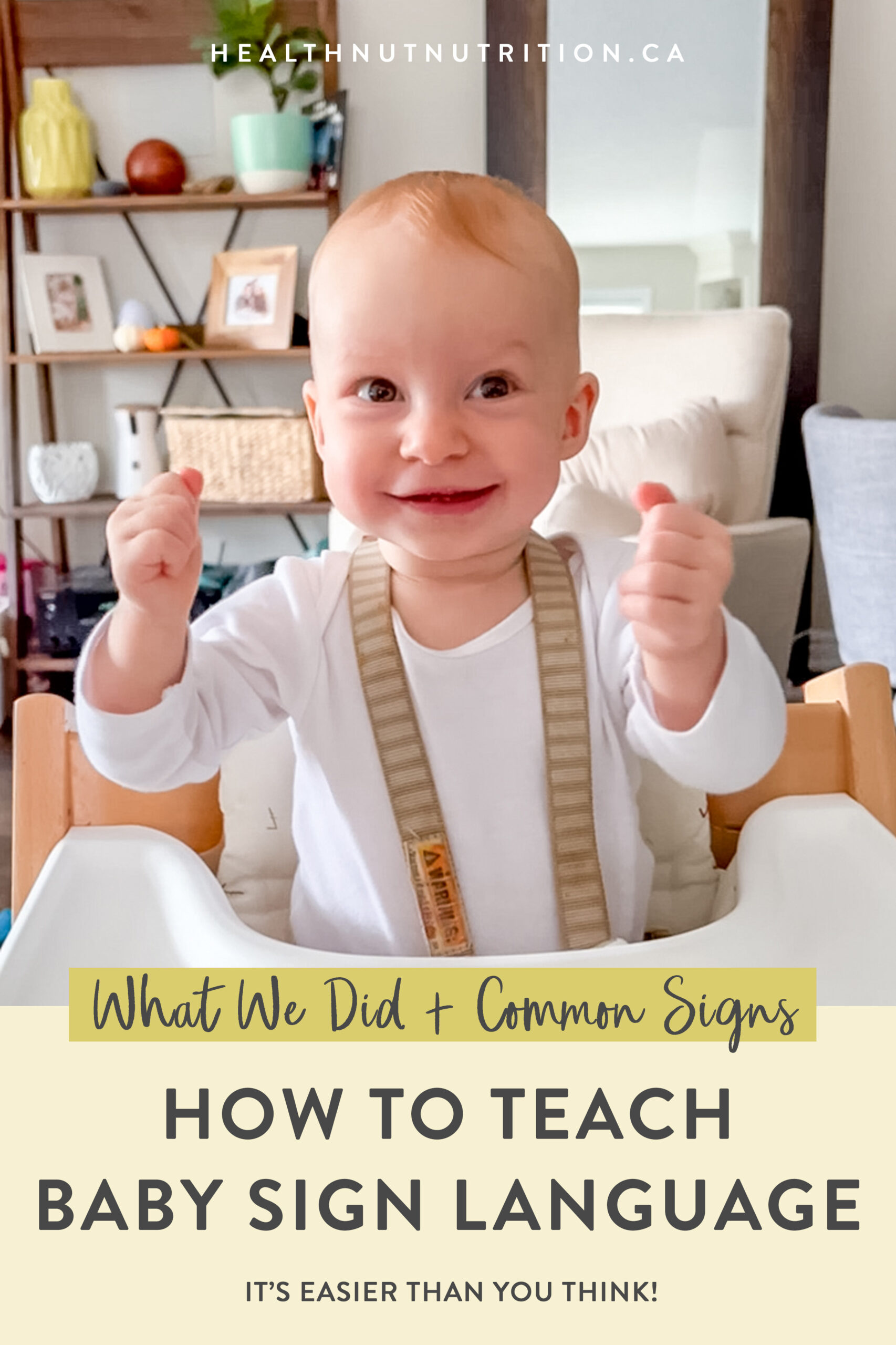

Leave a comment